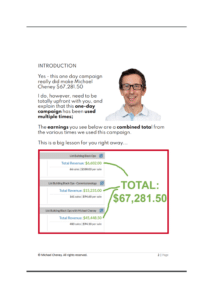Discover the benefits of using autoresponders in email marketing, how they work, and best practices for setting up your first autoresponder email campaign to engage subscribers and improve conversions.

Introduction to Autoresponders in Email Marketing
Autoresponders have fundamentally transformed the landscape of email marketing, offering a sophisticated mechanism to automate email responses triggered by specific user actions, such as signing up for a subscription, making a purchase, or even just making an inquiry. This capability extends beyond mere convenience, serving as a cornerstone for modern marketing strategies by ensuring consistent engagement with subscribers. Through the strategic use of triggers – like a customer’s birthday, a recent purchase, or a sign-up anniversary – autoresponders enable the delivery of personalized messages at scale. This level of personalization is not just about addressing a subscriber by name; it’s about sending relevant content that resonates with their individual interactions with your brand, significantly enhancing the subscriber experience.
The evolution of autoresponders from their initial role in sending basic confirmation emails to becoming an indispensable tool in the arsenal of digital marketers highlights their pivotal role in the advancement of email marketing. Today, autoresponders are leveraged not just for their efficiency in communication but also for their effectiveness in building and nurturing subscriber relationships over time. By automating parts of the communication process, marketers can devote more time to crafting strategies that drive deeper engagement, foster loyalty, and ultimately, contribute to the growth of the business. In essence, the emergence of autoresponders has not only simplified the way we manage email communications but also significantly elevated the potential of email marketing campaigns to engage and convert [1].
Understanding How Autoresponders Work
Autoresponders function as an automated engine in the realm of email marketing, tirelessly working behind the scenes to ensure timely and personalised communication with subscribers. At the heart of this system lies the ability to send out a sequence of emails based on specific triggers, such as a new subscription or a customer’s purchase. For instance, the journey might commence with a welcome email immediately after subscription, progressing to a series of informative emails about the brand and its values, and perhaps culminating in a special offer or a call-to-action to engage further with the brand. This automation streamlines the communication process, ensuring that no subscriber feels neglected while freeing up valuable time for marketers to focus on more strategic tasks.
The versatility and intelligence of autoresponders come from their ability to utilise data effectively. By analysing subscriber actions, preferences, and significant milestones, such as birthdays or subscription anniversaries, autoresponders can dispatch highly relevant and personalised emails. A compelling example of this is the deployment of birthday emails that not only convey warm wishes but may also include a special discount or gift. This level of personalisation strengthens the brand-subscriber relationship, making each subscriber feel valued and understood. Furthermore, the use of autoresponders in re-engagement campaigns, where emails are specifically designed to reignite the interest of inactive subscribers, exemplifies the strategic depth these tools add to email marketing campaigns. Through such targeted and timely interactions, autoresponders play a pivotal role in enhancing subscriber engagement and fostering long-term relationships.
The Benefits of Using Autoresponders
Autoresponders have revolutionised the way marketers approach email campaigns, offering a suite of advantages that significantly enhance the effectiveness of digital marketing strategies. One of the most compelling benefits of employing autoresponders is their ability to dramatically increase engagement and conversion rates. Studies have shown that automated emails boast a 152% higher click rate when compared to their non-automated counterparts. This surge in engagement is largely attributed to the timely, relevant, and personalised content that autoresponders are able to deliver, directly addressing the interests and needs of each recipient. For instance, a welcome email, automatically sent upon a new subscription, can set the tone for a fruitful relationship between the brand and the subscriber, often resulting in an open rate as high as 50%.
Moreover, autoresponders significantly reduce the workload on marketing teams by automating routine communication tasks. This automation frees up valuable resources, allowing teams to allocate more time and effort towards refining their strategies and creating compelling content. By maintaining consistent and meaningful contact with subscribers, autoresponders facilitate the nurturing of leads and the cultivation of enduring relationships. This consistent engagement is crucial not only for retaining current subscribers but also for transforming them into loyal customers. For example, a series of well-crafted drip campaign emails can guide a subscriber from initial interest to final purchase, gently pushing them down the sales funnel with each interaction. The strategic use of autoresponders in this manner underscores their significance in boosting customer engagement and retention rates, thus highlighting their indispensable role in the success of email marketing campaigns.
 Setting Up Your First Autoresponder Email Campaign
Setting Up Your First Autoresponder Email Campaign
Embarking on your first autoresponder email campaign can be a transformative step for your email marketing strategy, but it requires careful planning and execution. Start by delineating clear objectives for your autoresponder series. This could range from welcoming new subscribers and fostering a sense of community, to nurturing potential leads through educational content, or even incentivising sales with exclusive offers. For instance, a welcome email series might start with a heartfelt introduction to your brand, followed by emails that showcase your best content or products, effectively setting the tone for future communications.
The success of your autoresponder campaign hinges not just on the content, but also on delivering the right message to the right segment of your audience. This necessitates a deep dive into segmenting your contact list based on criteria like subscriber behaviour, purchase history, or demographic information. Such segmentation ensures that your messages resonate on a personal level, enhancing engagement and conversion rates. Choosing an autoresponder service that aligns with your needs is equally critical. It’s essential to consider factors such as user-friendliness, the breadth of automation features, and how well the service integrates with other tools you use. Once your infrastructure is in place, focus on crafting content that captivates, with each email tailored to guide your subscribers towards a clear call-to-action, whether it’s to read a blog post, make a purchase, or provide feedback. For example, a campaign aimed at lead nurturing might include a series of educational emails that culminate in an invitation to schedule a consultation, each step meticulously designed to build trust and advance the subscriber along the sales funnel [3].
 Examples of Effective Autoresponder Uses
Examples of Effective Autoresponder Uses
Welcome emails, boasting an impressive open rate of 50%, stand as a testament to the power of autoresponders in forging initial connections with new subscribers. This first touchpoint is crucial in setting the tone for future interactions, offering a prime opportunity to introduce the brand, convey its values, and guide subscribers towards key actions or resources. For instance, a welcome email from a fashion retailer might include a personal greeting, a brief introduction to the brand’s story, and an exclusive discount code for the first purchase. This approach not only captivates the subscriber’s attention but also encourages immediate engagement with the brand.
Drip campaigns exemplify another strategic use of autoresponders by delivering a series of emails that are meticulously timed and content-curated to guide leads through the sales funnel. By providing information that is progressively more detailed or persuasive, these campaigns gently nudge subscribers from awareness to decision-making stages. A software company, for example, might use a drip campaign to first introduce a problem that its product solves, followed by testimonials and case studies, and finally, a demo invitation. Additionally, autoresponders excel in automating routine communications like feedback requests and customer support messages, thereby enhancing the efficiency of customer service operations. Moreover, incorporating personalised product recommendations into autoresponders has been shown to significantly boost conversion rates, by as much as 25%. This demonstrates the capability of autoresponders to not only maintain ongoing engagement but also directly contribute to business growth by tailoring offerings to individual customer preferences and behaviours.
Best Practices for Autoresponder Sequences
In the realm of email marketing, the power of a well-crafted autoresponder sequence cannot be overstated. At the heart of these sequences lies the art of personalisation. By harnessing subscriber data, marketers can tailor each message to fit the interests, behaviours, and preferences of their audience, significantly enhancing the relevance and engagement of their emails. For instance, a simple personalisation tactic such as using the subscriber’s first name in the email’s greeting can dramatically increase the open rates. This level of customization makes the recipient feel valued and seen, fostering a stronger connection between them and the brand.
Beyond personalisation, the analytical aspect of managing autoresponder sequences is crucial for their success. Monitoring key performance metrics, including open rates and click-through rates, provides invaluable insights into how well the emails are resonating with the audience. This data serves as a compass, guiding the ongoing optimisation of the email strategy. Additionally, A/B testing emerges as a powerful tool in this context. By experimenting with different email elements—such as subject lines, content layouts, and calls-to-action—marketers can discern what best aligns with their overall marketing objectives and what drives the highest engagement. Moreover, adhering to email marketing regulations by including a clear unsubscribe option is not just a matter of compliance; it also respects the subscriber’s choice and can improve the overall quality of the email list by retaining those genuinely interested in the brand [1].
Choosing the Right Autoresponder Service
Selecting the ideal autoresponder service is a pivotal step in setting up successful email marketing campaigns. The choice should be informed by a thorough assessment of several key features that can significantly impact the effectiveness of your email marketing efforts. Firstly, the availability of a diverse template library is crucial as it provides a starting point for crafting engaging emails without the need for extensive design skills. Additionally, high deliverability rates ensure that your emails actually reach your subscribers’ inboxes, thus maximising the potential for engagement. Integration options are equally important; the ability to seamlessly connect your email marketing tool with other software such as CRM systems, e-commerce platforms, and social media accounts can streamline your marketing processes and enhance the efficiency of your campaigns.
Moreover, customer support stands as a critical factor, especially for businesses that are new to email marketing or those that plan to execute complex campaigns. Having access to responsive and knowledgeable support can make a significant difference in how quickly you can resolve issues and implement more sophisticated strategies. Among the top tools available in the market, such as Mailercloud, Mailchimp, GetResponse, ConvertKit, and MailerLite, each platform brings its unique set of features tailored to different marketing needs and budget considerations. For instance, Mailchimp is known for its user-friendly interface and extensive integration capabilities, making it a favourite among small businesses. On the other hand, GetResponse is often lauded for its advanced automation features, catering to marketers looking to implement complex autoresponder sequences. It’s imperative to carefully evaluate each option, considering your specific requirements, budget constraints, and long-term marketing objectives. This strategic approach will ensure you select a service that not only fits your current needs but also scales with your business growth.
 Conclusion: The Future of Autoresponders in Email Marketing
Conclusion: The Future of Autoresponders in Email Marketing
The trajectory of digital marketing is unmistakably veering towards more automated, personalised, and efficient strategies, with autoresponders at the forefront of this evolution. As these tools become more sophisticated, thanks to ongoing advances in automation software, marketers will find themselves equipped with the capabilities to launch email campaigns that are not only highly targeted but also incredibly effective in engaging their audience. This evolution promises not just an enhancement in the efficiency of campaigns but a transformation in how customer engagement is perceived and achieved.
Integrating artificial intelligence (AI) with autoresponder systems opens up unprecedented possibilities for personalisation and segmentation, enabling emails to be tailored to the minutiae of subscriber preferences and behaviours. Imagine an autoresponder that can predict the exact moment a subscriber is most likely to open an email or suggest products based on their browsing history with uncanny accuracy. This level of personalisation doesn’t just increase the relevance of each communication; it significantly boosts the potential for conversions, heralding a new era where email marketing campaigns are driven by insights derived from AI, ensuring that each message not only reaches the right inbox at the right time but resonates on a personal level with the recipient.

If you’ve been struggling online this report will open your eyes.


Become the Internet Marketing Millionaire’s Next Apprentice!!
 Setting Up Your First Autoresponder Email Campaign
Setting Up Your First Autoresponder Email Campaign Examples of Effective Autoresponder Uses
Examples of Effective Autoresponder Uses Conclusion: The Future of Autoresponders in Email Marketing
Conclusion: The Future of Autoresponders in Email Marketing